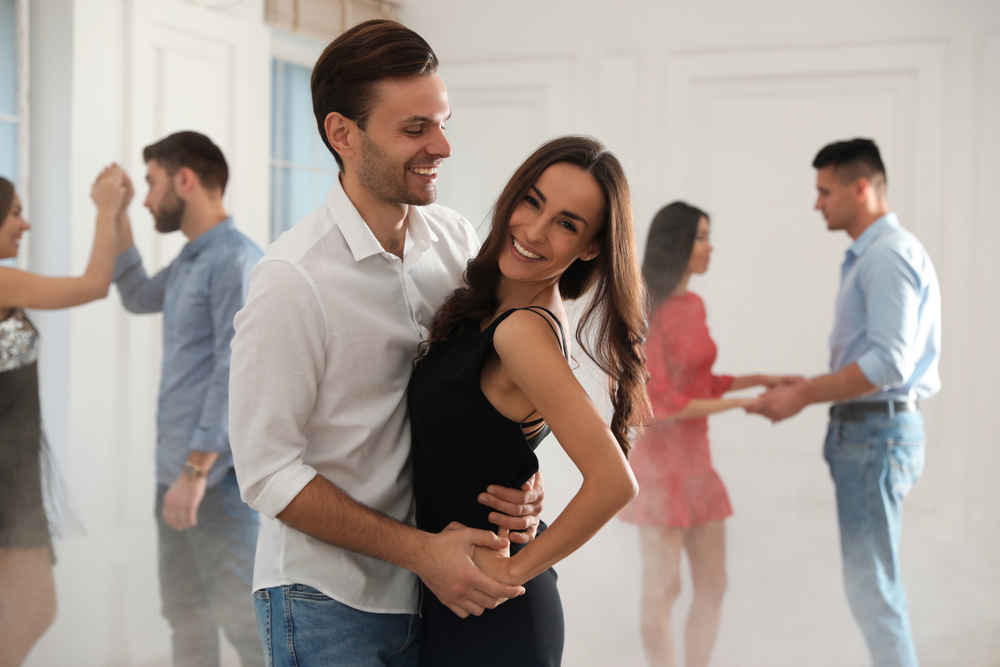
Don’t be afraid to kick up your heels! Learning how to ballroom dance is not nearly as frightening or intimidating as it may appear. Start your ballroom dancing journey by mastering a few types of dances to help make you the life of the party.
Instructors at Fred Astaire Dance Studios teach people of all ages and abilities the time-honored tradition of ballroom dancing. We can up your dancing game and put you on a path to confident dancing after a single lesson. When you sign up for lessons, your instructor will start by learning your dancing goals. If you are taking lessons to get in shape, Latin dancing is a good choice. If you are brushing up on your dance skills to impress at your wedding reception, a waltz may be the ticket.
No matter your end goal, our instructors start with the basics and help you master a few types of dances to give you the skills you need to have fun on the dance floor. Here are five ballroom dances you need to master.
1. Waltz. The waltz got its name from the German word “walzen,” which means to revolve. It is performed in three-quarter time and features a step and slide. The waltz is a great slow dance and is easy to master because it only has four steps. Check out this Halloween-themed number by James Hinchcliffe and Jenna Johnson Waltz on “Dancing With the Stars.”
2. Rumba. The rumba has Afro-Cuban roots and features exaggerated hip movements. The engaging, slow dance uses a box step like the waltz and is characterized by two quick side steps and a forward step.
3. Swing. The fast-paced swing dance developed during the Roaring 20s as the popularity of jazz music took off. The dance is characterized by quick spins and lifts. As part of the eye-catching dance, partners hold hands and perform similar movements side-by-side. Watch this couple’s energy at the Rock the Swing Festival in 2020.
4. Cha-Cha. The cha-cha is typically performed with high-energy Latin music. It features three quick steps and two slower steps, spins, and hip movement.
5. Foxtrot. The foxtrot is another slow, romantic dance. The dance is easy to learn and combines long, flowing movements with quick steps. In this clip, Susanna Reid and Kevin Clifton dance the foxtrot to “Can’t Take My Eyes Off You” on “Strictly Come Dancing,” a British dance show.
The Rich History of Ballroom Dance
Some ballroom dances you need to master, like the waltz, have their roots in folk traditions but gained popularity during the 17th and 18th centuries in the ballrooms of Europe’s elite. Ballroom dancing has evolved to include at least 19 different types of dances. Each dance differs in rhythm and technique, but all are performed with a partner.
Fred Astaire Dance Studios teaches both International Style and American Style of ballroom dancing. International Style includes both standard and Latin dances and is commonly used on the competitive circuit. The influence of jazz music and the dancing talents of our founder, Fred Astaire, helped create American Style in the early 1900s, which is less formal. A few other types of dances commonly taught at Fred Astaire include the salsa, jive, tango, and quickstep.
Master Ballroom Dancing at FADS
Stop holding up the wall at parties and impress your friends with your new dancing skills by signing up for ballroom dance lessons at your local Fred Astaire Dance Studios. To learn more about mastering some ballroom dances in a fun, welcoming atmosphere, click here to contact your local studio.

